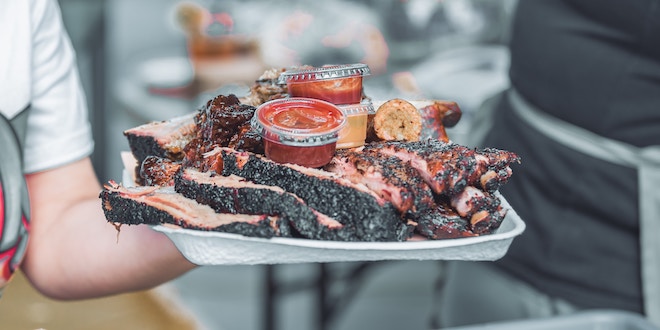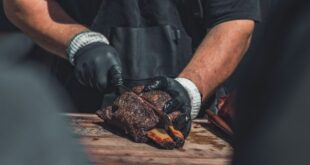Last Updated on January 24, 2024
The cuisine of the Deep South is rich and diverse. Much of the food is hearty and comforting while other dishes have Creole and Cajun flavors. The cuisine invites you to explore the unique tapestry of tastes of the South. The scrumptious foodways tell a distinctly Southern story of soul, tradition, and cultural identity. This culinary sojourn delves into the array of flavors that define the iconic food of the Deep South.
Impact of Cultural Diversity
Southern cuisine is defined by its cultural diversity. Corn-based dishes reflect Native American influences, while staples like rice and yams stem from West African traditions. Cajun and Creole food in Louisiana originated from a blend of Spanish and French cultures. And in the Appalachian region, dishes carry the legacy of Scots-Irish settlers. Across the South, this varied heritage has always been integral, creating a cuisine known for its rich assortment of flavors.
Southern food is also marked by regional diversity. Coastal areas embraced seafood, while inland regions leaned heavily into pork and grilled meats. Migration within America too brought about further variation and diversification in Southern food.
Traditional Deep South Dishes
The heartland of Southern cooking serves up distinctive dishes that narrate tales of centuries past. To begin with, nothing says ‘Southern’ like biscuits smothered in gravy, a satisfying delicacy that has kept bellies full for generations.
Then there’s the iconic Fried Chicken, which evolved from Scottish immigrants’ tradition of frying chicken in fat. However, it was African slaves who perfected this dish by adding spices and seasonings to the mix. Grits, a corn-based food of Native American origin, is another traditional Southern fare, often paired with shrimp – a staple seafood item from the coastal regions.
Journey of Pork Loin Back Ribs
Pork holds a distinct place in Southern cuisine, especially pork loin back ribs or ‘baby back ribs’. The process of smoking meat was borrowed from the Native American practice of preserving food. Applying this technique to pork became popular due to its abundant availability.
Preparing back ribs, typically through slow-cooking over wood fire, is somewhat of an art form in the South. Smoky, tender and deliciously seasoned, these ribs have now found familiarity and favor far beyond Southern borders.
Significance of Lowcountry Cooking
Lowcountry cooking is integral to Southern culinary heritage. It represents the coastal regions of South Carolina and Georgia where rice was a dominant crop. The combination of plentiful seafood and rice spawned distinctive dishes like Shrimp and Grits or Frogmore Stew.
This cooking style reflects African influences as well as touches of Spanish, French and Caribbean flavors. This melting pot effect gives Lowcountry cuisine an intricate complexity that defines it as a unique subgenre within Southern cooking.
Importance of Corn in Southern Food
Corn’s versatility made it a dietary mainstay in Southern cuisine early on. From grits to cornbread or even used as a thickening agent in stews; this native grain has proven its mettle in Southern kitchens for centuries.
Furthermore, traditional practices such as nixtamalization – a process which enhances the nutritional value of corn – passed down from Native Americans, are still in use today. This continuation of traditions reflects the relationship between food, culture and heritage in the South.
Exploring Southern Barbecue
Barbecue occupies a cultural status beyond a mere cooking style in the South. The term originates from the Taino Indian “barbacoa,” referring to a wooden frame used to slowly roast meats over an open fire. Early Spanish explorers adopted this indigenous technique, spawning what is now known as Southern barbecue.
Unique styles emerged across barbecue regions, bearing the marks of distinct meat selections, cooking methods, and sauce concoctions. Texas brisket, smothered in a spicy, tomato-tinged sauce, differs greatly from Carolina pulled pork dressed in peppery vinegar. It’s as if the diverse palates and histories of the South come alive through the exploration of barbecue. From a tour of the many barbecue styles, one discovers the people behind the smoke and sauce.
The Role of Seafood
Seafood plays a huge part in Southern cuisine. This is particularly seen in coastal regions. Catfish and shrimp are popular and seen in dishes such as gumbo or lowcountry boil.
The traditional preparation methods often involve frying or stewing which infuse the dishes with flavor. These Creole and Cajun influenced dishes show the harmony between local ingredients and a rich cultural heritage.
Impact of Southern Cuisine Nationwide
The influence of Southern cuisine has radiated well beyond regional boundaries. Whether it’s Nashville’s hot chicken sweeping the nation, or the demand for shrimp and grits growing beyond the coastal plain, Southern foods have carved a coveted place in America’s culinary landscape.
These distinctly Southern delights have created a dining experience that speaks volumes about the region’s history, culture and soul, making its impact both flavorful and far-reaching.
The Art of Southern Baking
Baking skills are cherished in traditional Southern households. From crispy, crumbly biscuits to rich cornbread and sweet pies, baking is interwoven into Southern food culture.
Each recipe narrates a story – Pecan Pie acknowledges Native American history; Chess Pie traces English roots while Sweet Potato Pie highlights African influence. Their delicious ubiquity at celebratory gatherings or casual suppers indicate the significant and emotional role they play in communal Southern life.
Cajun and Creole Cuisine Differences
Southern Louisiana’s Cajun and Creole cuisines often become subjects of tasty confusion thanks to their shared French roots and regional occurrence. However, their nuanced differences make them distinct culinary traditions.
Cajun cooking, stemming from French Acadians displaced to Louisiana bayous, represents rustic, home-style flavors with game meat, crawfish and rice as key components. On the other hand, Creole cuisine echoes the diversity of New Orleans with its sophisticated mix of European (mainly French and Spanish), African, Native American and Caribbean influences, resulting in dishes like Gumbo and Jambalaya.
Fusion in Modern Southern Food
The trend of fusion food has also seen chefs reinterpreting dishes in the South. Fusion food takes elements from different cuisines and melds them together. Done carefully this maintains the essence of Southern cooking while adding new ingredients.
From Chinese five-spice collard greens to Korean barbecue shrimp and grits, these cross-cultural experiments emphasize adaptability and creativity of Southern cuisine in the face of globalization.
Prominent Southern Food Festivals
No exploration of Southern food is complete without mentioning its vibrant food festivals. From the Pecan Festival in Alabama to the Barbecue Festival of Lexington in North Carolina, these gatherings celebrate the region’s culinary heritage and encourage communal connections.
They also serve as platforms to showcase regional variety, local ingredients and innovative adaptations, testifying the dynamism of Southern food culture.
Future of Deep South Cuisine
As for the future, expect Southern cuisine to continue evolving while preserving its roots. The devotion to local ingredients, traditional techniques and a sense of community will most likely remain at its core.
The fusion and modernization trends are likely to expand, making Southern food even more inclusive. Health-conscious approaches may lead to reinterpretations of classic dishes. Regardless of these innovations, one can be sure that the Soul of the South will persist in its cuisine.
A Hearty Conclusion
Southern cuisine is a flavorful mirror reflecting deep historical roots, cultural diversity and communal spirit. It imparts not only palate pleasure, but also rich insights into a region’s way of life shaped by generations. To explore Southern food is to embark on a delectably enlightening journey – an adventure that tantalizes taste buds and feeds curiosity alike!
 Travel for Food Hub The Food Blog for Travel Lovers
Travel for Food Hub The Food Blog for Travel Lovers
















